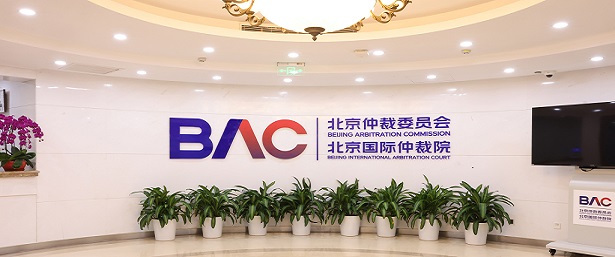
发布时间: Thu Apr 20 10:32:29 CST 2023

争议摘要
关于争议评审,在不同的国家或组织机构会使用不同的术语。在英国,法律术语是“审裁”(adjudication);在美国和加拿大,常见的是“争议评审委员会”(dispute review board)或“争议解决委员会”(dispute resolution board);菲迪克合同则使用“争议裁决委员会”(dispute adjudication board)或“争议避免/裁决委员会”(dispute avoidance/adjudication board)。有些国际组织或机构则喜欢使用简洁的“争议委员会”(dispute board)术语,例如国际商会使用“争议委员会”,包括了“争议评审委员会”“争议裁决委员会”或“混合争议委员会”(combined dispute board);争议解决委员会基金会和日本国际协力机构也都使用“争议委员会”泛指各种争议评审术语和方式。
争议评审委员会分为常设评审委员会和临时评审委员会。当事人可以在签订合同时或者在约定的期限内确定评审委员会成员,成立常设评审委员会,以跟踪了解合同履行的情况,协助预防争议;常设评审委员会可以根据当事人的申请,评审有关争议。当事人也可以在争议发生后,成立临时评审委员会,评审特定争议。
在中国的落地
早期中国主要在世界银行贷款的项目中使用争议评审委员会。2007年11月1日,国家发展改革委等九部委联合发布《标准施工招标文件》(2007年版)(下称《标准文件》),其中通用合同条款第24.3款明确提出了争议评审与争议解决机制。
起草人在《标准文件使用指南》中指出,借鉴国际经验,希望通过一个完全独立于合同双方的专家组对合同争议评审,求得建设工程争议的公正解决。这是中国政府发布的建设工程合同文本中首次提出争议评审作为争议解决机制。在起草过程中就争议评审是不是解决争议的必经程序曾有过讨论。在综合评估中国法律现状后,最终决定该款约定的争议评审不是解决争议的必经程序。
《标准文件》的发布,推动了争议评审解决机制在中国的落地。北京仲裁委员会/北京国际仲裁中心(下称“北仲”)于2009年1月20日通过了《北京仲裁委员会建设工程争议评审规则》(下称《北仲建工评审规则》)。北仲是在中国内地率先实施《建设工程争议评审规则》,并设立推荐性质的《建设工程评审员名册》的仲裁机构,评审员由专家学者、律师、企业代表等构成。此后,许多机构陆续推出了相应的争议评审规则。
由于《标准文件》中使用了“争议评审组”术语,各仲裁机构发布的规则也通常沿袭使用该措辞。例如《北仲建工评审规则》和中国国际经济贸易仲裁委员会《建设工程争议评审规则》均使用了“争议评审组”,以及其简称“评审组”。
在中国的实施案例
2023年伊始,北仲适用《北仲建工评审规则》的临时评审案件圆满画下句号。
除了上述仲裁机构管理的争议评审外,在国内也有争议当事人直接委托个人组成争议评审委员会,进行争议评审,其形式也呈现多样化。例如在两个国有企业之间的建设工程合同争议中,笔者与两位仲裁员共同作为评审专家,组成三人临时评审委员会,与争议当事人直接签署委托协议,提供评审意见。再如某政府投资项目,发包人和承包人委托三人组成临时争议评审组,争议评审组就涉及工期的争议委托笔者单位出具独立的工期延误分析报告供争议评审组使用。
从目前已经实施完成的争议评审案例来看,争议评审的确快速、低成本地解决了当事人的建设工程争议。尽管如此,自2007年《标准文件》发布后,在中国的争议评审案例还是比较少见。笔者认为其中很重要的一个原因是在国内的建设工程合同中,争议评审不是解决争议的必经程序。
如何推广争议评审委员会?
通常将争议评审委员会作为解决争议的必经程序有两种比较有效的方法。第一种是通过立法,例如英国《1996年房屋补助金、建设和重建法案》要求所有建设工程合同需要将争议评审作为正式争议解决方式中首先采用的方式。第二种是通过投资人影响发包人,例如世界银行通过要求贷款项目使用菲迪克合同文本,从而实现世界银行的贷款项目须将争议评审作为发起仲裁的前置争议解决方式。
在中国的建设工程领域推广争议评审制度最有效的方式是通过立法,将争议评审作为发起诉讼或仲裁之前首先采用的争议解决方式。在立法未完全实现之前,建议政府投资主管部门要求政府投资项目,或国有投资主管部门要求国有企业作为发包人签署合同时,将争议评审作为发起诉讼或仲裁之前首先采用的争议解决方式。
Introduction, implementation of dispute review in China
Various terminologies are used across different countries and institutions for dispute review. In the UK, the legal term is “adjudication”, while in the US and Canada, “dispute review board” or “dispute resolution board” are more common.
The International Federation of Consulting Engineers (FIDIC) contracts use “dispute adjudication board” or “dispute avoidance/adjudication board”. Some international organisations or institutions prefer the concise terminology of “dispute board”.
For example, the International Chamber of Commerce uses “dispute board”, which includes “dispute review board”, “dispute determination board” or “combined dispute board”.
The Dispute Resolution Board Foundation and Japan International Co-operation Agency also use “dispute board” to generally refer to various terms and methods for dispute review.
There are both permanent dispute review boards and ad hoc dispute review boards.
Parties may, at the time of signing a contract or within an agreed time limit, determine the members of a dispute review board and set up a permanent dispute review board to track contract performance and assist in dispute prevention.
A permanent dispute review board may review relevant disputes according to the application of the parties. The parties may also set up ad hoc dispute review boards to review particular disputes.
DISPUTE REVIEW IN CHINA
In the early days, China mainly used the dispute review board for World Bank loan projects. On 1 November 2007, nine ministries and commissions, including the National Development and Reform Commission (NDRC), jointly released the Standard Construction Bidding Documents (2007 Version), in which clause 24.3 of the general contract provisions expressly provided the mechanism of dispute review and dispute resolution.
In the NDRC’s Guidelines for Use of Standard Documents, the drafter expressed hope that fair resolution of construction project disputes might be achieved through a panel of experts that was completely independent of the contracting parties.
This suggestion was based on international experience and was the first time the central government had provided dispute review as a resolution mechanism for disputes in construction project contracts.
During the drafting, there were discussions on whether dispute review should be a mandatory process for the resolution of disputes.
However, after comprehensively evaluating and considering the current situation of PRC law, the drafters decided against the idea.
The release of the above-mentioned standard documents promoted the implementation of the dispute review mechanism in China.
On 20 January 2009, the Beijing Arbitration Commission/Beijing International Arbitration Centre (BAC) adopted the BAC Rules for Construction Dispute Review.
This adoption made the BAC the first arbitration institution in China to implement rules for dispute review of construction project disputes, and to establish a recommended register of construction dispute review assessors. These assessors consist of experts, scholars, lawyers and enterprise representatives.
Since then, many institutions have launched rules for dispute review. As the standard documents use the term “dispute review panel”, rules promulgated by Chinese arbitration institutions usually include this term.
For example, both the BAC and the China International Economic and Trade Arbitration Commission have rules for construction dispute review which use the term “dispute review panel”, and “review panel” in short.
IMPLEMENTATION IN CHINA
The beginning of 2023 saw the successful conclusion of an ad hoc review subject to the BAC Rules for the Construction Dispute Review.
In addition to the dispute review administered by arbitration institutions, there are also cases in China in which the parties directly entrust individuals to form committees for dispute review.
Such committees can take various forms. For example, in a construction project contract dispute between two state-owned enterprises, two arbitrators and the author sat as dispute review experts, forming a three-member ad hoc dispute review panel. This panel directly entered an agreement with the parties and provided review opinions on the resolution of the construction project dispute between them.
In another example involving a government-invested project, the employer and the contractor entrusted three people to form a temporary dispute review panel. This panel then engaged the author’s company to issue an independent construction delay analysis report.
Judging from completed dispute review cases, dispute review can resolve construction disputes rapidly and at low cost. Even so, dispute review has seen little action in China since the standard documents were issued in 2007.
In the author’s opinion, one reason is that dispute review is not a mandatory procedure for dispute resolution in construction contracts in China.
HOW TO PROMOTE
Generally, there are two effective ways to make a dispute review a mandatory procedure:
Legislation. For example, in the UK, the Housing Grants, Construction and Regeneration Act 1996 requires all construction contracts to adopt adjudication as the first formal dispute resolution method; and
Investor influence on the contractor. For example, the World Bank requires that dispute review be adopted as a pre-dispute resolution method for launching arbitration for its loan projects. It does this by requiring the FIDIC contract form to be adopted for its loan projects.
In China, legislation that establishes dispute review as a prioritised dispute resolution method before litigation or arbitration can be the more effective way to promote dispute review for construction projects.
Ahead of such legislation, the author suggests that investment regulatory authorities require government investment projects or state-owned enterprises, as contractors, to use dispute review before initiating litigation or arbitration.
作者简介
作者 | 北京仲裁委员会/北京国际仲裁中心仲裁员邱闯
本文刊载于《商法》2023年4月刊。如欲阅读电子版,欢迎浏览《商法》官网。
